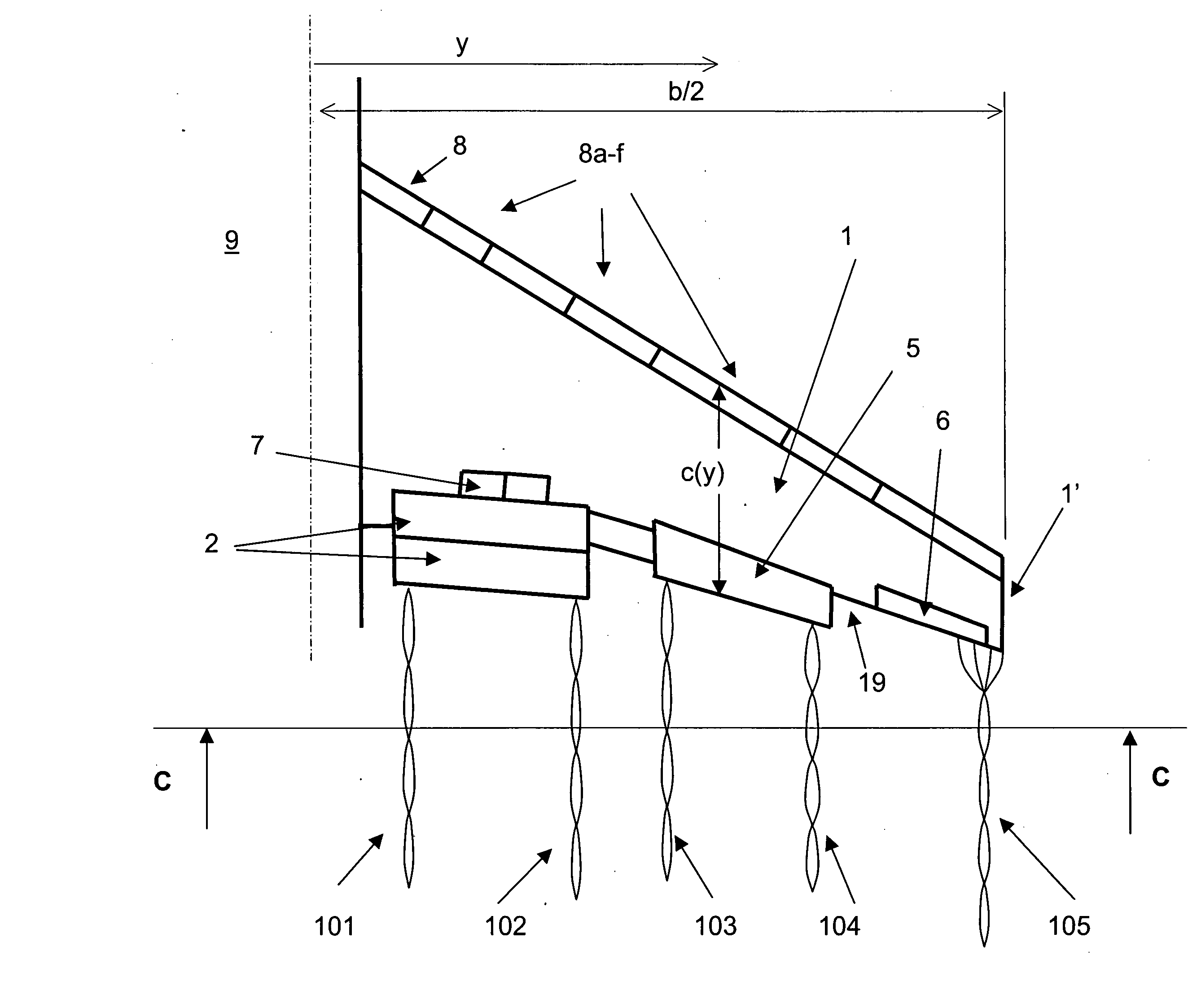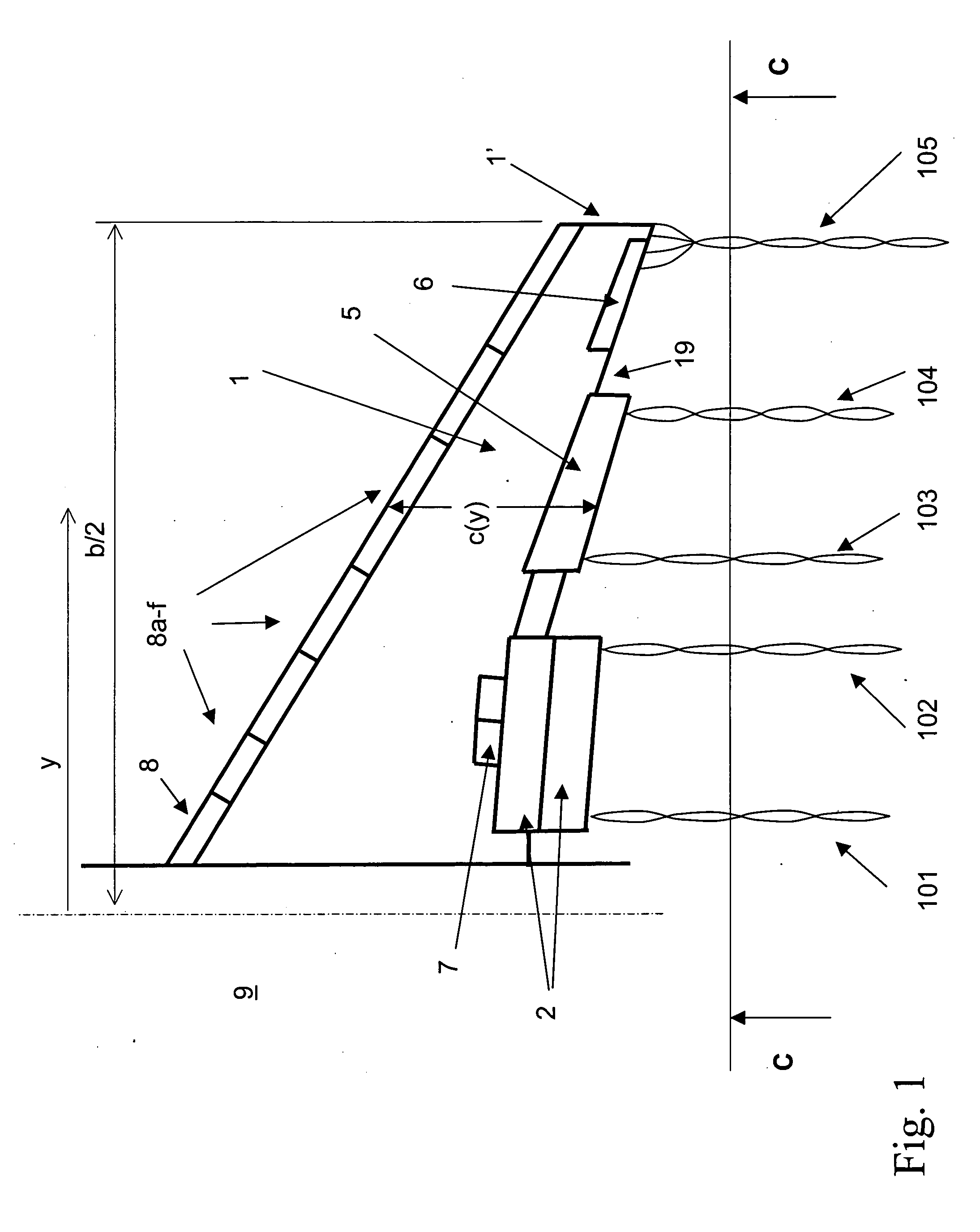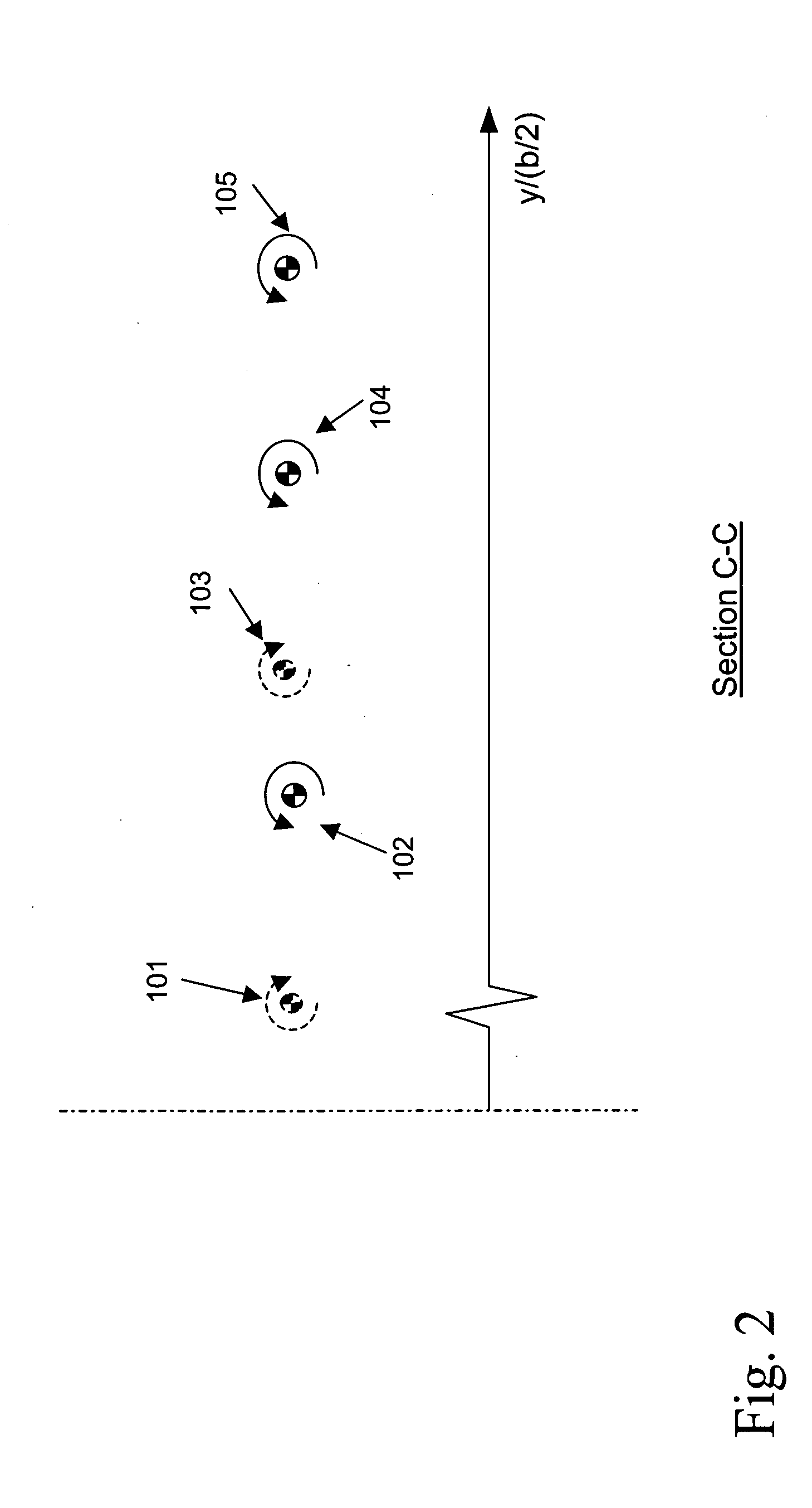Trailing vortex management via boundary layer separation control
a technology of boundary layer separation and trailing vortex, applied in the direction of separation process, air-flow influencer, transportation and packaging, etc., can solve the problem of complex three-dimensional interaction, rapid destruction of trailing vortex coherence in the wake, and generating trailing vortices susceptible to rapid destruction, etc., to achieve high-instable wake structure
- Summary
- Abstract
- Description
- Claims
- Application Information
AI Technical Summary
Benefits of technology
Problems solved by technology
Method used
Image
Examples
Embodiment Construction
[0052]FIG. 1 depicts a typical starboard airliner wing 1 in planview. The wing includes various control surfaces, some of which serve to control the flight of the aircraft (e.g. aileron 6) and others that are used to generate high-lift for take-off and landing (e.g. inboard flap 2 and outboard flap 5). The wing 1 is attached to a fuselage 9 and in the configuration shown in FIG. 1 has its high-lift system of flaps (2 and 5) deployed. The portside wing is not shown in the figure, and is a mirror image of the starboard wing shown. The spanwise coordinate y is measured from the symmetry plane, i.e. the fuselage center. The two wings have a total wingspan denoted b; thus the starboard wing shown here has a span of b / 2, and the aircraft flies at speed V. In general the lift, l(y), varies along the span y of the wing. The spanwise distance is often expressed in the non-dimensional form y / (b / 2).
[0053] For purposes of clarity, it is important to introduce a number of definitions and termin...
PUM
 Login to View More
Login to View More Abstract
Description
Claims
Application Information
 Login to View More
Login to View More - R&D
- Intellectual Property
- Life Sciences
- Materials
- Tech Scout
- Unparalleled Data Quality
- Higher Quality Content
- 60% Fewer Hallucinations
Browse by: Latest US Patents, China's latest patents, Technical Efficacy Thesaurus, Application Domain, Technology Topic, Popular Technical Reports.
© 2025 PatSnap. All rights reserved.Legal|Privacy policy|Modern Slavery Act Transparency Statement|Sitemap|About US| Contact US: help@patsnap.com



